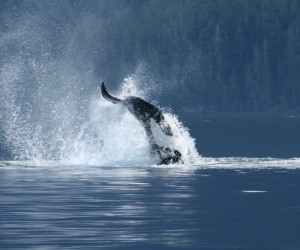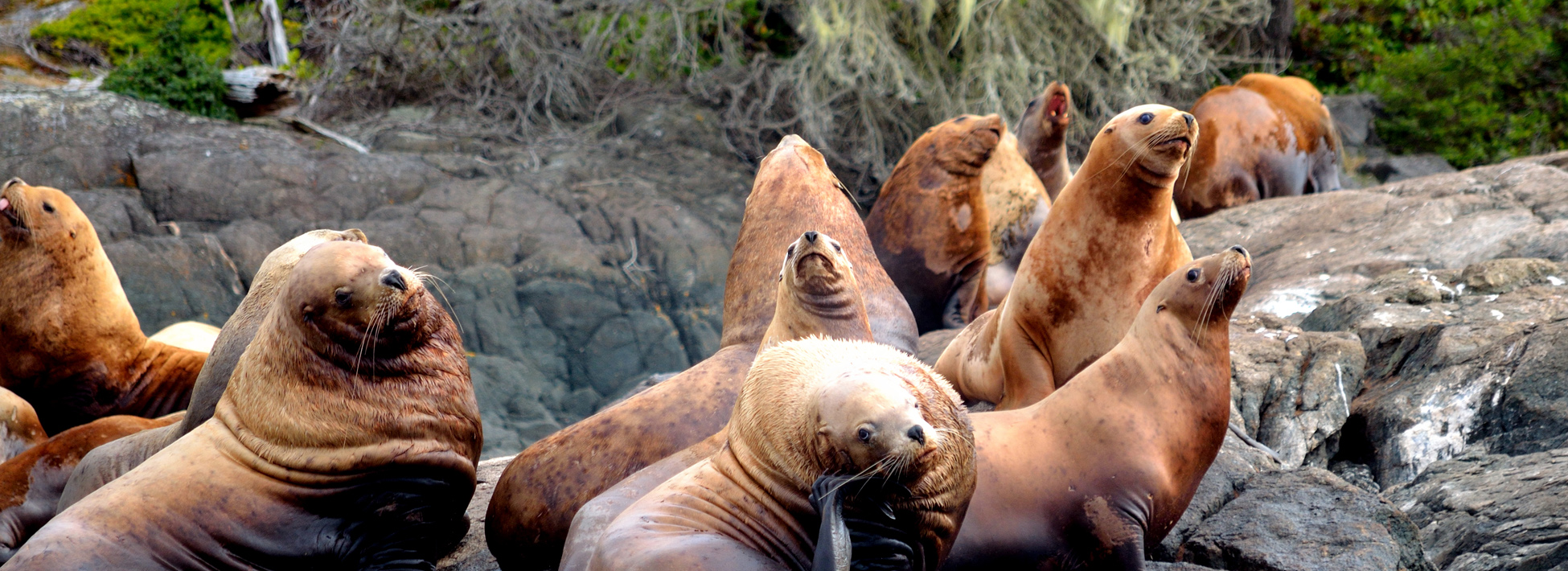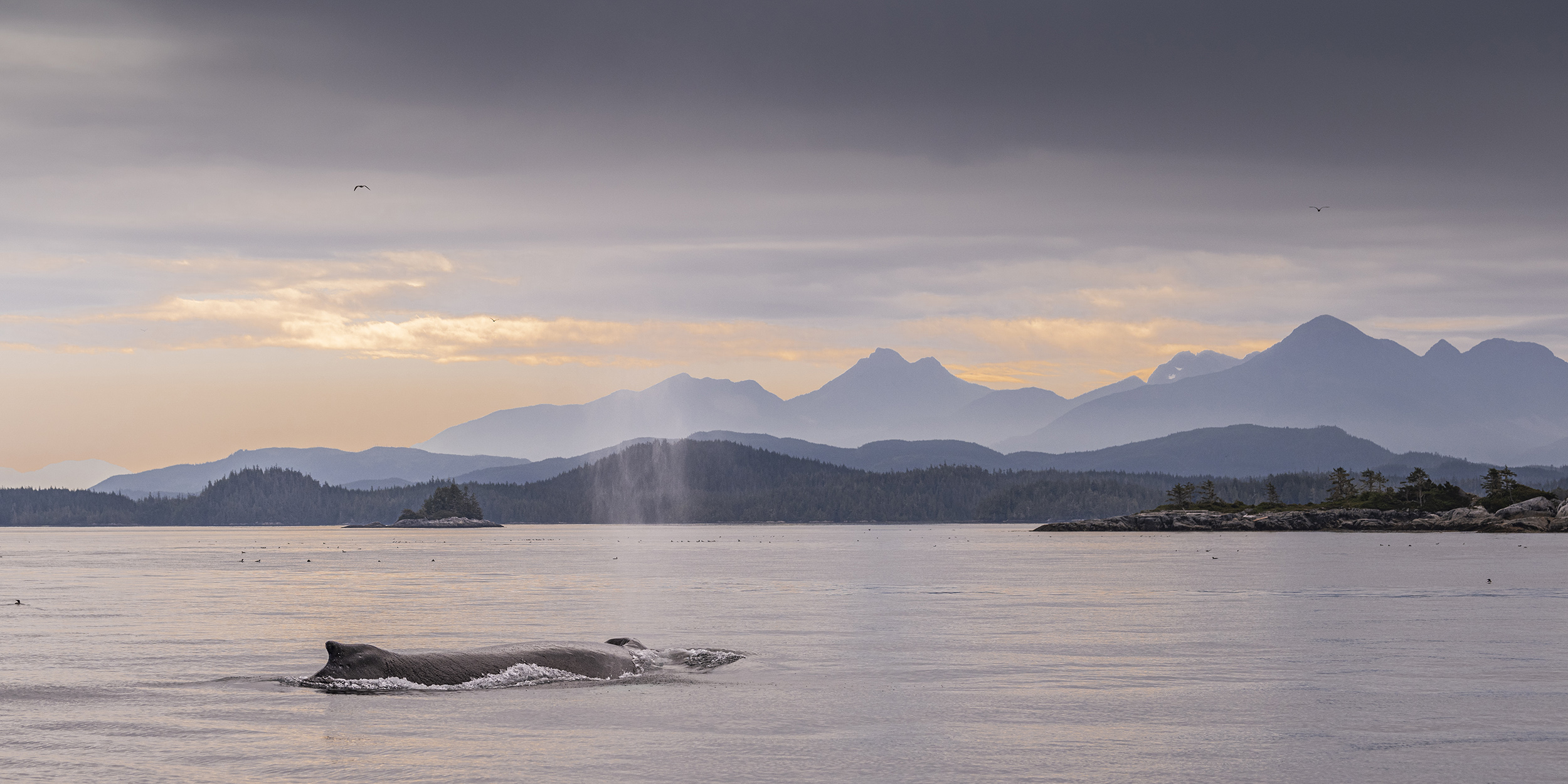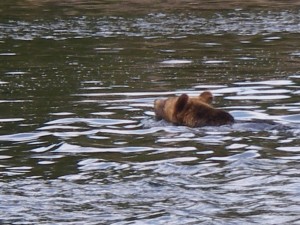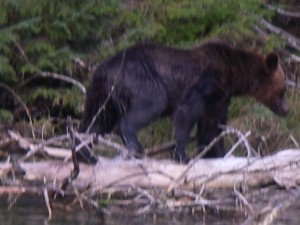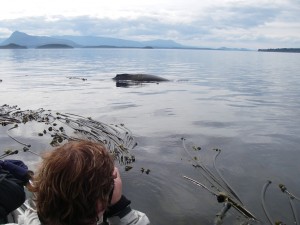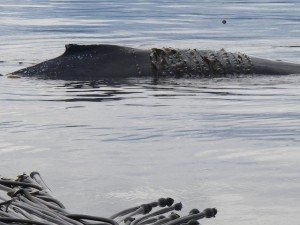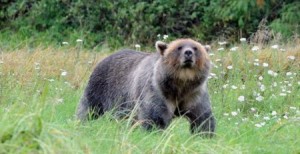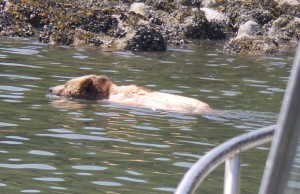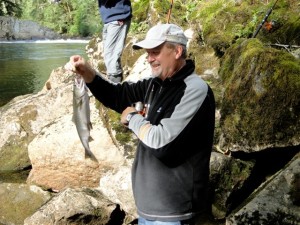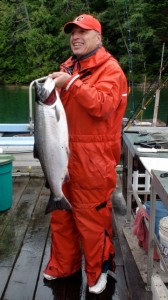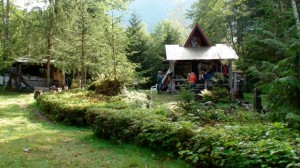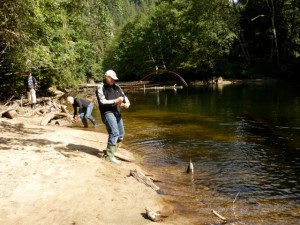Tail slapping or lob tailing creates loud sounds above water and under water as well as providing a dramatic photo opportunity. It is said that orca may do this to relieve an itch, as their outer skin layer is continually sloughed as they swim. The growth of killer whale epidermal (skin) cells is about 290 times faster than that of a human forearm. Studies also suggest that killer whales are curious, with great tendency to “play” and to manipulate objects. The killer whales in our viewing area, the Johnstone Strait, rub their bodies along the pebbly bottoms of shallow bays or “rubbing beaches” located in the Robson Bight. It is assumed they do it for tactile stimulation, or it may help remove external parasites and their outer skin. The reason is secondary the sight is s spectacular.
